Por: Henry A. Giroux
The following is an excerpt from the new book America at War with Itself by Henry A. Giroux (City Lights, 2016):
In the current historical moment in the United States, the assault on social tolerance is nourished by the assault on the civic imagination. One of the most egregious examples of these attacks can be found in the political rise of Donald Trump. Trump’s popular appeal speaks not just to the boldness of what he says and the shock his inflamed rhetoric provokes, but the increasingly large numbers of Americans who respond to his aggressive bigotry with the eagerness of an angry lynch mob. Marie Luise Knott is right in noting, “We live our lives with the help of the concepts we form of the world. They enable an author to make the transition from shock to observation to finally creating space for action—for writing and speaking. Just as laws guarantee a public space for political action, conceptual thought ensures the existence of the four walls within which judgment operates.” The concepts that now guide our understanding of American society are produced by a corporate-influenced model that brings ruin to language, community, and democracy itself.
Missing from most of the commentaries by mainstream media regarding the current rise of Trumpism is any historical context that would offer a critical account of the ideological and political disorders plaguing U.S. society. A resurrection of historical memory in this moment could provide important lessons regarding the present crisis, particularly the long tradition of white racial hegemony, exceptionalism, and the extended wars on youth, women, immigrants, people of color, and the economically disadvantaged. As Chip Berlet points out, what is missing from most media accounts are traces of history that would make clear that Trump’s presence on the American political landscape is the latest expression of a long tradition of “populist radical right ideology—nativism, authoritarianism, and populism . . . not unrelated to mainstream ideologies and mass attitudes. In fact, they are best seen as a radicalization of mainstream values.” Berlet goes even further, arguing that “Trump is not an example of creeping totalitarianism; he is the injured and grieving white man growing hoarse with bigoted canards while riding at the forefront of a new nativist movement.” For Adele M. Stan, like Berlet, the real question that needs to be asked is: “What is wrong with America that this racist, misogynist, money-cheating clown should be the frontrunner for the presidential nomination of one of its two major parties?” Berlet is on target when he suggests that understanding Trump in terms of fascism is not enough. But Berlet is wrong in suggesting that all that the Trump “clown wagon” represents is a more recent expression of the merger of right-wing populism and racist intolerance. History does not stand still, and as important as these demagogic elements are, they have taken on a new meaning within a different historical conjuncture and have been intensified through the registers of a creeping totalitarianism wedded to a new and virulent form of savage capitalism. Racism, bigotry, and xenophobia are certainly on Trump’s side, but what is new in this mix of toxic populism is the emergence of a predatory neoliberalism that has decimated the welfare state, expanded the punishing state, generated massive inequities in wealth and power, and put into place an ethos in which everybody has to provide for themselves. America has become a society of permanent uncertainty, intense anxiety, human misery, and immense racial and economic injustice. Trump offers more than what might be called a mix of The Jerry Springer Show and white supremacist ideology; he also offers up domestic and foreign policies that point to a unique style of neo-fascism, one that has deep roots in American history and society. What is necessary in the current political moment is an analysis in which the emergence of a new form of totalitarianism is made visible in Trump’s rallies, behavior, speeches, and proposals.
One example can be found in Steve Weissman’s commentary in which he draws a relationship between Trump’s casual racism and the rapidly emerging neo-fascist movements across Europe that “are growing strong by hating others for their skin color, religious origin, or immigrant status.” Weissman’s willingness to situate Trump in the company of European radical right movements such as Jean-Marie Le Pen’s populist National Front, Greece’s Golden Dawn political party, or Vladimir Zhirinovsky’s Liberal Democratic Party of Russia provides a glimpse of what Trump has in common with the new authoritarianism and its deeply racist, anti-immigration, and neo-Nazi tendencies.
Unfortunately, it was not until late in Trump’s presidential primary campaign that journalists began to acknowledge the presence of white militias and white hate groups at Trump’s rallies, and almost none have acknowledged the chanting of “white power” at some of his political gatherings, which would surely signal Trump’s connections not only to historical forms of white intolerance and racial hegemony but also to the formative Nazi culture that gave rise to genocide. When Trump was told that he had the support of the Ku Klux Klan—a terrorist organization—Trump hesitated in disavowing such support. Trump appears to have no issues with attracting members of white hate groups to his ranks. Nor does Trump seem to have issues with channeling the legitimate anger and outrage of his followers into expressions of hate and bigotry that have all the earmarks of a neo-fascist movement. Trump has also refused to condemn the increasing racism at many of his rallies, such as the chants of angry white men yelling, “If you’re an African first, go back to Africa.” Another example of Trump’s embrace of totalitarian politics can be found in Glenn Greenwald’s analysis of the mainstream media’s treatment of Trump’s attack on Jorge Ramos, an influential anchor of Univision. When Ramos stood up to question Trump’s views on immigration, Trump not only refused to call on him, but insulted him by telling him to go back to Univision. Instead of focusing on this particular lack of civility, Greenwald takes up the way many journalists scolded Ramos because he had a point of view and was committed to a political narrative. Greenwald saw this not just as a disingenuous act on the part of establishment journalists, but as a failure on the part of the press to speak out against a counterfeit notion of objectivity that represents a flight from responsibility, if not political and civic courage. Greenwald goes further, arguing that the mainstream media and institutions at the start of Trump’s campaign were too willing, in the name of objectivity and balance, to ignore Trump’s toxic rhetoric and the endorsements and expressions of violence. He writes:
«Actually, many people are alarmed, but it is difficult to know that by observing media coverage, where little journalistic alarm over Trump is expressed. That’s because the rules of large media outlets—venerating faux objectivity over truth along with every other civic value—prohibit the sounding of any alarms. Under this framework of corporate journalism, to denounce Trump, or even to sound alarms about the dark forces he’s exploiting and unleashing, would not constitute journalism. To the contrary, such behavior is regarded as a violation of journalism. Such denunciations are scorned as opinion, activism, and bias: all the values that large media-owning corporations have posited as the antithesis of journalism in order to defang and neuter it as an adversarial force.»
Timothy Egan argues that it would be wrong to claim that Trump’s followers are simply ignorant, or to suggest that they are only driven by economic issues. Though he underplays the diversity of Trump’s supporters and the legitimacy of some of their complaints, I think he is right in suggesting that many of them know exactly what Trump represents, and in doing so embody the darkest side of Republican Party politics, which have a long history of nurturing hate, racism, and bigotry. Egan writes:
«Donald Trump’s supporters know exactly what he stands for: hatred of immigrants, racial superiority, a sneering disregard of the basic civility that binds a society. Educated and poorly educated alike, men and women—they know what they’re getting from him. . . . But ignorance is not the problem with Trump’s people. They’re sick and tired of tolerance. In Super Tuesday exit polls, Trump dominated among those who want someone to ‘tell it like it is.’ And that translates to an explicit ‘play to our worst fears,’ as Meg Whitman, the prominent Republican business leader, said. ‘He’s saying how the people really feel,’ one Trump supporter from Massachusetts, Janet Aguilar, told The Times. ‘We’re all afraid to say it.'»
Robert Reich draws a number of parallels between early twentieth-century fascism and Trump’s ideology, practices, and policies. He argues that the fascist script is repeated in Trump’s use of fear to scare and intimidate people, his “repeated attacks on Mexican immigrants and Muslims,” his appeal as the patriotic strongman who can personally remedy economic ills, his vaunting of “national power and greatness,” his willingness to condone or appear to legitimate violence against protesters at his rallies, and his preying on the economic distress, misery, and collective anxiety of millions of people “to scapegoat others and create a cult of personality.”
Mike Lofgren echoes a number of Reich’s criticisms but goes further and argues that Trump represents the decision on the part of the American public to choose fascism over what he calls a “managed democracy.” According to Lofgren, a managed democracy has been produced in the United States by a culture of war and fear, especially since the massacre of thousands of Americans on 9/11. The effects of such a war psychosis were evident in the lies made by the Bush administration regarding nonexistent weapons of mass destruction, lies that were repeated ad nauseam to dupe Americans into an unjustified war against Iraq. It is also evident in the rise of the national insecurity surveillance state and its declared notion that everyone is a potential suspect, a notion that helps to further the internalization of the Terror Wars. Another boost to America’s culture of fear, insecurity, and war was the economic crash of 2008, which furthered anxiety to levels not seen since the Great Depression. Amidst this decade-long culture of fear and war, Lofgren argues that the United States may very well become a fascist political system by 2017.
Predictions about America’s descent into fascism are not new and should surprise no one who is historically literate. Rick Perlstein is correct in arguing that Trump provides a service in making clear how conservative ideology works at its deepest levels, and that he exposes the hypocrisy of dressing reactionary politics in a discourse of liberation. Journalists such as Wall Street Journal columnist Peggy Noonan predictably downplay the racist and fascist undertones of Trump’s candidacy, arguing that Trump is simply a symptom of massive disillusionment among Americans who are exhibiting a profound disdain, if not hatred, for the political and economic mainstream elites. Disappointingly, however, this argument is often bolstered by progressives who claim that criticism of Trump’s bigotry and racism cannot fully account for his political appeal. For instance, Thomas Frank observes that Trump actually embraces a number of left-leaning positions that make him popular with less educated working-class whites. He cites Trump’s criticism of free trade agreements, his call for competitive bidding with the drug industry, his critique of the military-industrial-complex and its wasteful spending, and his condemnation of companies that displace U.S. workers by closing factories in the United States and opening them in much less developed countries such as Mexico in order to save on labor costs.
In this view, the working class becomes a noble representative of a legitimate populist backlash against neoliberalism, and whether or not it embraces an American form of proto-fascism seems irrelevant. Frank, however, has a long history of ignoring cultural issues, ideologies, and values that do not simply mimic the economic system. As Ellen Willis pointed out in a brilliant critique of Frank’s work, he makes the mistake of imagining popular and media culture as simply “a pure reflection of the corporate class that produces it.” Hence, racism, ultra-nationalism, bigotry, religious fundamentalism, and other anti-democratic factors get downplayed in Frank’s analysis of Trump’s rise to power. This view is reductionist and ignores research indicating that a large body of Trump supporters, who back explicit authoritarian polices, rarely complain about the predatory economic policies pushed by the Republican and Democratic parties. If anything, such economic pressures intensify these deep-seated authoritarian attitudes. What Trump’s followers have in common is support for a number of authoritarian policies mobilized around “an outsize fear of threats, physical and social, and, more than that, a desire to meet those threats with severe government action—with policies that are authoritarian not just in style but in actuality.” Such policies include:
Using military force over diplomacy against countries that threaten the United States; changing the Constitution to bar citizenship for children of illegal immigrants; imposing extra airport checks on passengers who appear to be of Middle Eastern descent in order to curb terrorism; requiring all citizens to carry a national ID card at all times to show to a police officer on request, to curb terrorism; allowing the federal government to scan all phone calls for calls to any number linked to terrorism.
John Judis extends this progressive line of argument by comparing Trump with Bernie Sanders, claiming that they are both populists and outsiders while suggesting that Trump occupies a legitimate outsider status and raises a number criticisms regarding domestic policies for which he should be taken seriously by the American people and not simply dismissed as a racist, clown, or pompous showman. Judis writes:
«Sanders and Trump differ dramatically on many issues—from immigration to climate change—but both are critical of how wealthy donors and lobbyists dominate the political process, and both favor some form of campaign finance reform. Both decry corporations moving overseas for cheap wages and to avoid American taxes. Both reject trade treaties that favor multinational corporations over workers. And both want government more, rather than less, involved in the economy. Sanders is a left-wing populist. He wants to defend the “collapsing middle class” against the “billionaire class” that controls the economy and politics. He is not a liberal who wants to reconcile Wall Street and Main Street, or a socialist who wants the working class to abolish capitalism. Trump is a right-wing populist who wants to defend the American people from rapacious CEOs and from Hispanic illegal immigrants. He is not a conventional business conservative who thinks government is the problem and who blames America’s ills on unions and Social Security. Both men are foes of what they describe as their party’s establishment. And both campaigns are also fundamentally about rejecting the way economic policy has been talked about in American presidential politics for decades.»
Some liberals, such as Arthur Goldhammer, go so far as to suggest that Trump’s appeal is largely an extension of the “cult of celebrity,” his management of “a very rational and reasonable set of business practices,” and his attention to the anger of a disregarded element of the working class. He asserts without irony that Trump “is not an authoritarian but a celebrity,” as if one cancels out the other. While celebrity culture confers authority in a society utterly devoted to consumerism, it also represents less a mode of false identification than a manufactured spectacle that cheapens serious and thoughtful discourse and puts into play a focus on the commercial world of fashion, style, and appearances. This has given rise to mainstream media that devalue politics, treat politicians as celebrities, refuse to give them a serious hearing, and are unwilling to raise tough questions. Precisely because it is assumed that celebrities are too dumb to answer such questions and that the public is more concerned about their personal lives than anything else, they are too often exempt from being held accountable for what they say, especially if it doesn’t square comfortably with the spectacle of banality. Celebrity culture is not simply a mode of entertainment, it is a form of public pedagogy central to creating a formative culture that views thinking as a nuisance at best, or at worst, as dangerous. Treated seriously, celebrity culture provides the architectural framing for an authoritarian culture by celebrating a deadening form of self-interest, narcissism, and civic illiteracy. As Fritz Stern, the renowned historian of Germany, has argued, the dark side of celebrity culture can be understood by the fact that it gave rise to Trump and represents the merger of financial power and a culture of thoughtlessness.
Roger Berkowitz, the director of the Hannah Arendt Center, takes Goldhammer’s argument further and claims that Trump is a celebrity who knows how to work the “art of the deal” (a reference to the title of Trump’s well-known neoliberal manifesto). That is, Trump is a celebrity with real business acumen and substance. In particular, he argues, Trump’s appeal is due in part to his image as a smart and successful businessman who gets things done. Berkowitz goes into overdrive in his claim that Trump is not a Hitler, as if that means he is not a demagogue unique to the American context. Without irony, Berkowitz goes so far as to write, “It is important to recognize that Trump’s focus on illegal immigrants, protectionism, the wall on the Mexican border, and the terrorist danger posed by Muslims transcends race.” I am assuming he means that Trump’s racist ideology, policies, and rhetoric can be removed from the poisonous climate of hate that he promotes, the policies for which he argues (such as torture, which is a war crime), and the violence he breeds at his rallies. Indeed, Berkowitz implies that these policies and practices derive not from a fundamental orientation of white intolerance but from a sound understanding of free-market economics and business.
The sound business practice that Berkowitz finds admirable has a name; it is called neoliberal capitalism and it has spread an untold degree of human misery, political corruption, and inequality throughout the world. It has given us a social and political formation that promotes militarization, attacks the welfare state, aligns itself slavishly with corporate power, corrupts politics, and aggressively demeans women, Blacks, Latinos, Muslims, protesters, and immigrants.
Trump and his followers may not yet be a fascist party in the strict sense of the word, but they certainly display elements of a new style of American authoritarianism that comes close to constituting a proto-fascist movement. Trump’s call to raise the nation to greatness, the blaming of Mexican immigrants and Muslims for America’s troubles, the vitriolic disdain for protesters, the groups of thugs that seem to delight in cheering at Trump’s references to violence and gladly administer it to protesters, especially members of the Black Lives Matter movement, all echo historical elements that have shaped totalitarian regimes that have plagued the West from the Nazis of Europe to the dictators of Latin America.
As American society moves from a culture of questioning to a culture of shouting, it restages politics and power in ways that are truly unproductive, frightening, and anti-democratic. Writing about Arendt’s notion of totalitarianism, Jerome Kohn provides a commentary that contains a message for the present age, one that points to the possibility of hope triumphing over despair—a lesson that needs to be embraced at the present moment. He writes that for Arendt, “what matters is not to give oneself over to the despair of the past or the utopian hope of the future, but ‘to remain wholly in the present.’ Totalitarianism is the crisis of our times insofar as its demise becomes a turning point for the present world, providing us with an entirely new opportunity to realize a common world, a world that Arendt called a ‘human artifice,’ a place fit for habitation by all human beings.” If Trump is the manifestation of an emerging self-destructive totalitarianism, the movement for solidarity and change developing among a diverse range of national networks including the Black Lives Matter movement, fast food workers, environmentalists, and a range of other social justice groups, points to an alternative, diversified, and sustainable future.
Trump signifies the marshaling of self-destructive white anxiety, bigotry, and intolerance to the service of an exclusionary grid of economic, military, surveillance, police, and corporate self-interest. Rather than view Trump as an eccentric clown, perhaps it is time to portray him in a historical context connected with the West’s totalitarian past, a story that needs to be publicly retold and remembered. By making such connections and telling such stories, we strengthen ourselves and spread the insurgent call to prevent contemporary manifestations from gaining further ground.
The great writer James Baldwin once said we are living in dangerous times, that the society in which we are living is “menaced from within,” and that young people have to “go for broke.” And while he acknowledged that “going for broke” would mean meeting the “most determined resistance,” he argued that it was necessary for young people to rise up and use their energy to reclaim their right to live with dignity, justice, equity, and a sense of possibility. Baldwin got it right, and so do the young people who are now taking up this challenge and, in doing so, are imagining a future free of the menace of totalitarianism that now hangs like a punishing sandstorm over our current political moment.
Henry A. Giroux’s most recent books include The Violence of Organized Forgetting and America’s Addiction to Terrorism. A prolific writer and political commentator, he has appeared in a wide range of media, including The New York Times and Bill Moyers.
Fuente: http://www.alternet.org/books/new-old-authoritarianism-donald-trump
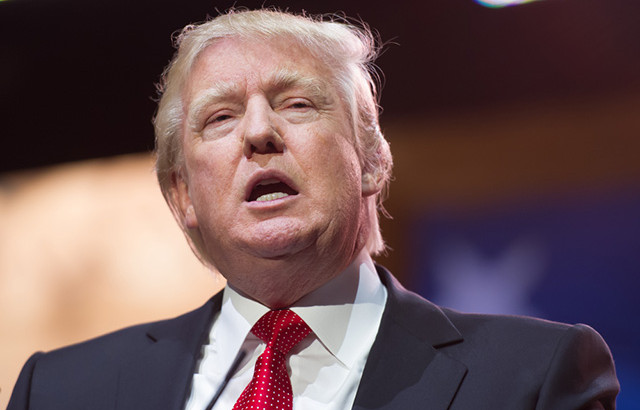
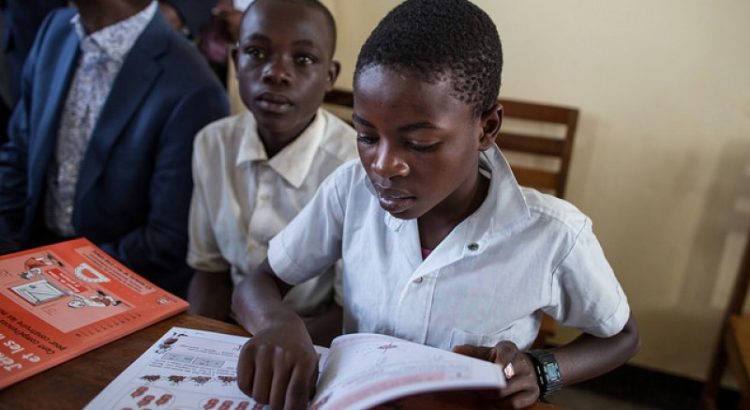


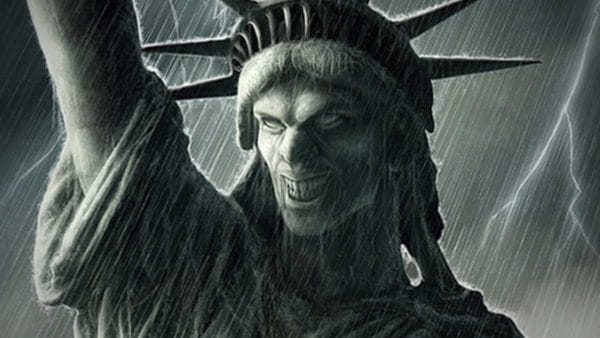
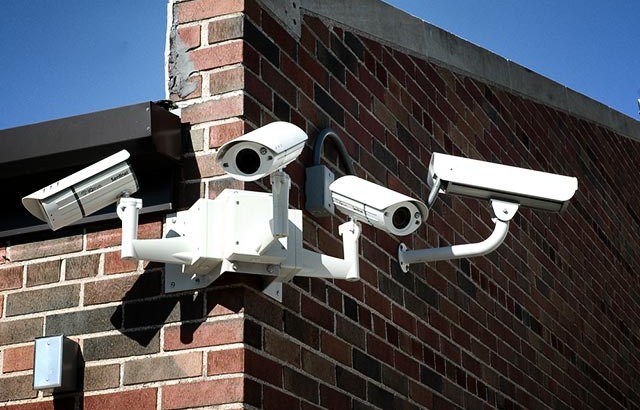

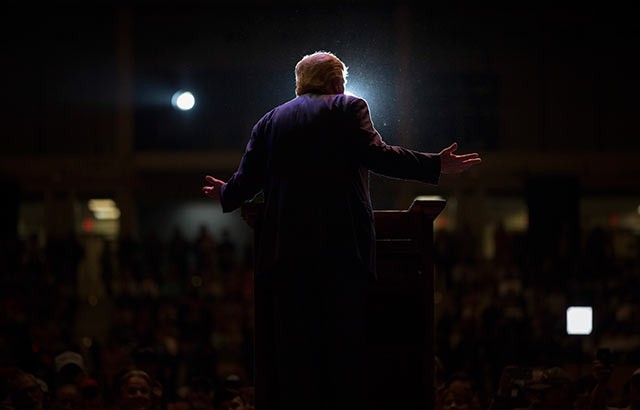
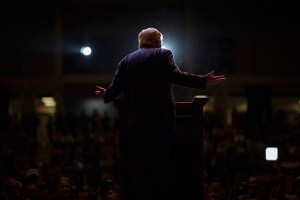






 Users Today : 251
Users Today : 251 Total Users : 35459846
Total Users : 35459846 Views Today : 423
Views Today : 423 Total views : 3418395
Total views : 3418395